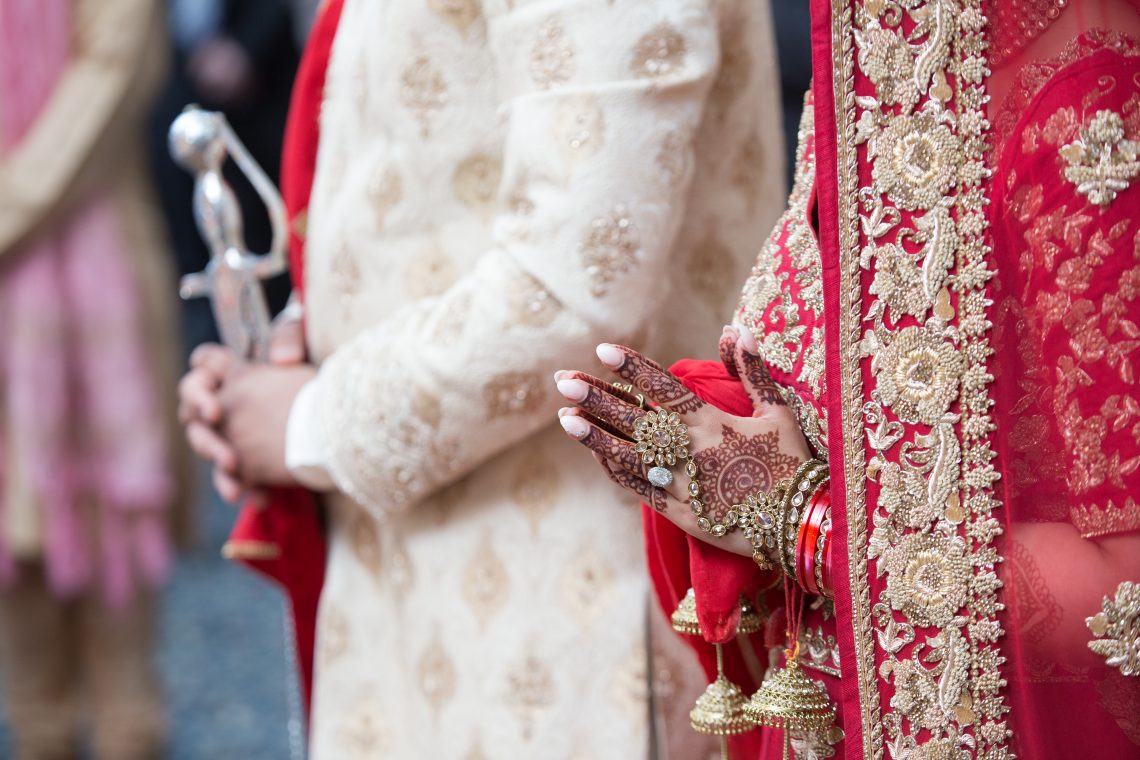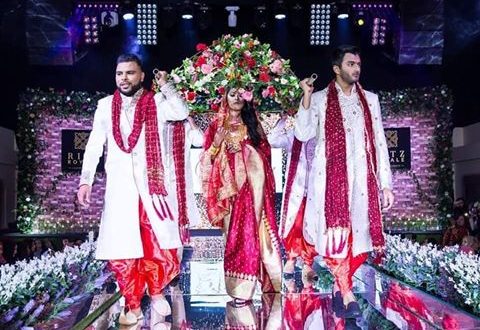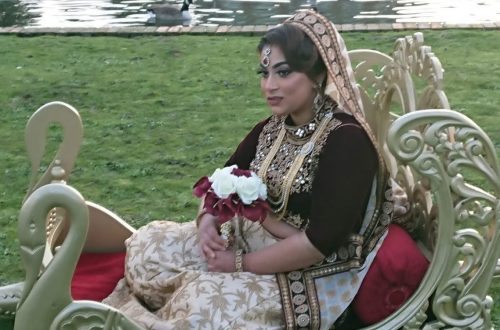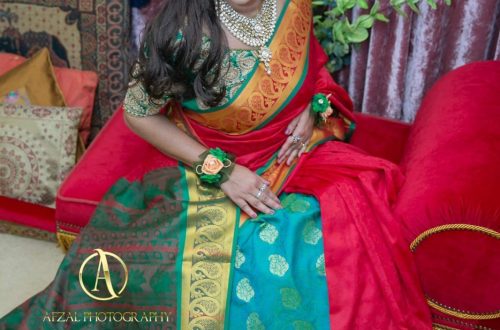A Traditional Sikh Wedding and its Significance
A Sikh wedding consists of several pre- and post-wedding rituals. The wedding ceremony is called Anand Karaj. Here are the traditions that are observed at a Sikh wedding.
Pre-wedding Rites
• Roka and Thaka – These pre-wedding rituals celebrate the involvement and support of the couple’s parents to the wedding. The bride’s father visits the place of the groom and applies a tilak on the groom’s forehead and presents him with gifts such as clothes and sweets to express his approval. The same thing is done by the parents of the groom for the bride. These rituals may occur either few days before or on the engagement ceremony.
• Kurmai – The formal engagement ceremony occurs at the gurudwara or at the house of the groom. The Granthi or priest says a short prayer before the engagement formalities start. The family of the bride gives the groom a Kripan, a knife that is a symbol of the heroic heritage of the Sikh and a Kara or the obligatory steel bangle that Sikh men must wear. Dried dates are placed on the hands of the groom and a red scarf on his shoulders and around his neck. The bride’s grandfather feeds the dried dates to the groom. The guests are served with drink and food once the formalities are over.
• Akhand Paath – Before the date of the Anand Karaj is set, readers from the bride and groom’s families sit down at the gurudwara or at their homes to read the Guru Granth Sahib within 48 hours. This ritual aims to explain to the couple the importance of the teachings of Guru Granth Sahib and religion.
• Kirtan – Religious music is performed. Raagis or experienced musicians sing Gurbani.
• Ardas – Members of the family visit the gurudwara every day to offer prayers.
• Karah Prasad and Langar – Family members, make a sweet Prasad with flour, semolina, nuts, and ghee. The Prasad is given to the attendees once their prayers are completed. They also devour on Langar or community style meal.
• Shagan – The family of the bride sends the family of the groom gifts before the wedding
• Chunni Chadana – The female relatives of the groom visits the bride’s home and bring her a wedding outfit, jewelry, makeup kits, and accessories. The groom’s mother covers the head of the bride with a chunni or sanctified headscarf.
• Maiya – A cleansing ceremony that occurs on any of the preceding 5 days from the wedding wherein the couple sits down on a stool. Oil is applied to the bride and groom’s hair. Turmeric paste is also applied to their body. Female relatives hold a red cloth is over their heads. Traditional wedding songs are sung by remaining female guests.
• Karahi Chadana – A large wok or Karahi is set up in the kitchen, and the food items are cooked in that. It occurs 5 days before the wedding.
• Warna – Money is waved around the couple’s head clockwise and then donated to charity.
• Gaana – A red thread is tied on the bride’s left wrist and on the groom’s right wrist.
• Gharoli – The sister-in-law of the groom or bride visits a gurudwara and fills up a Gharoli or unique earthenware with holy water and brings the pot back to the house. The water is used to bathe the couple after the Vatnaa.
• Vatnaa – The couple sits down on a low stool, and all married women of the family smear them with Vatnaa, a specially prepared paste made of barley, mustard, and turmeric. Wedding songs are also sung.
• Mehendi – Henna paste is applied to the feet and hands of the bride. This is practiced 2 or 3 days before the wedding.
• Chooda and Kalire – The bride’s maternal uncle gives her a set of 21 white and red bangles or Chooda. Before the wedding, these bangles are washed with rosewater and curd. The bangles covered with a silk shawl once the bride has worn them. The bride’s relatives tie Kalire or umbrella-shaped metallic ornaments to her bangles and give their blessings. She moves the Kalire over the heads of her unmarried relatives and friends.
• Sehra Bandi – Before leaving the house, a turban is tied around the head of the groom by his father. He’s given a fake sword that he should carry during all the wedding ceremonies. The groom’s sister ties a curtain made of flowers or golden ribbons (Sehra) around the turban and covers the groom’s face.
• Soorma and Kalgi – A Surma or black dot of kohl is applied on the side of groom’s forehead by his sister-in-law. A piece of jewelry is tied on his turban by his sister. He should give him a gift before he can go to the wedding venue.
• Baraat – The groom travels to the bride’s place. Bhangra dance and music is an integral part of a Baraat.
• Milni – The baraat is welcomed in by the family members of the bride who state their faith in the workings of God and sing hymns. They are given a warm hug and garland.
• Anand Karaj – It occurs at the Gurudwara prayer hall during afternoons or during the daytime and means Blissful Union.
• Lavaan Pheras – The four Lavaa from the Guru Granth Sahib is recited by the person conducting the marriage. The bride and groom slowly walk around the Guru Granth Sahib in a clockwise direction.
• Anand Sahib – The raagis sing out Anand Sahib Hymns. An Ardaas is offered as a sign that the wedding ceremony is complete. A random Guru Granth Sahib hymn is recited while Khatah Prasad is given to the attendees.
• Wedding Lunch – Guests are served with vegetarian lunch at the congregational hall of the Gurudwara. Roti occurs, which is signifies the first meal of the bride as a married woman. A cash gift is also given to her by her in-laws.
• Sadaa Suhagan – The bride wears the outfit and jewelry given to her by the groom’s family.
• Doli and Vidaai – The bride departs from her home.
• Welcoming the Bride – The groom’s family welcomes the bride.
• Reception – A reception party is hosted by the groom’s family to honor the couple.







